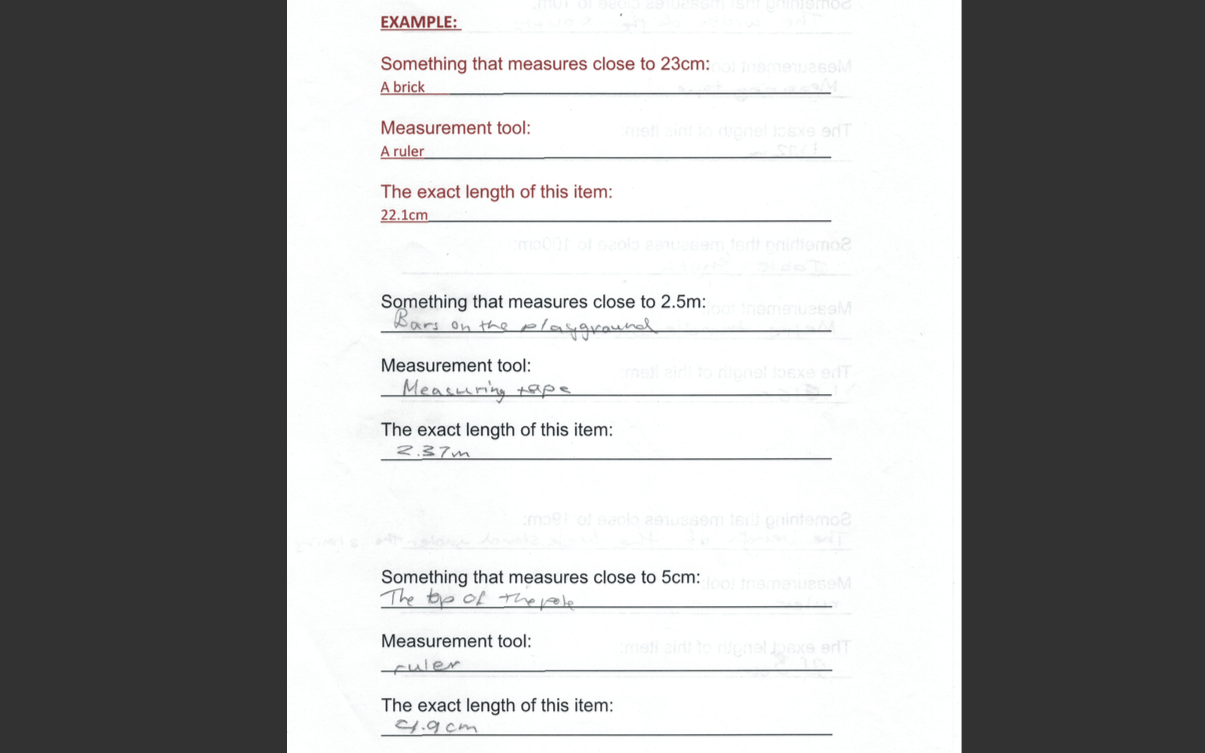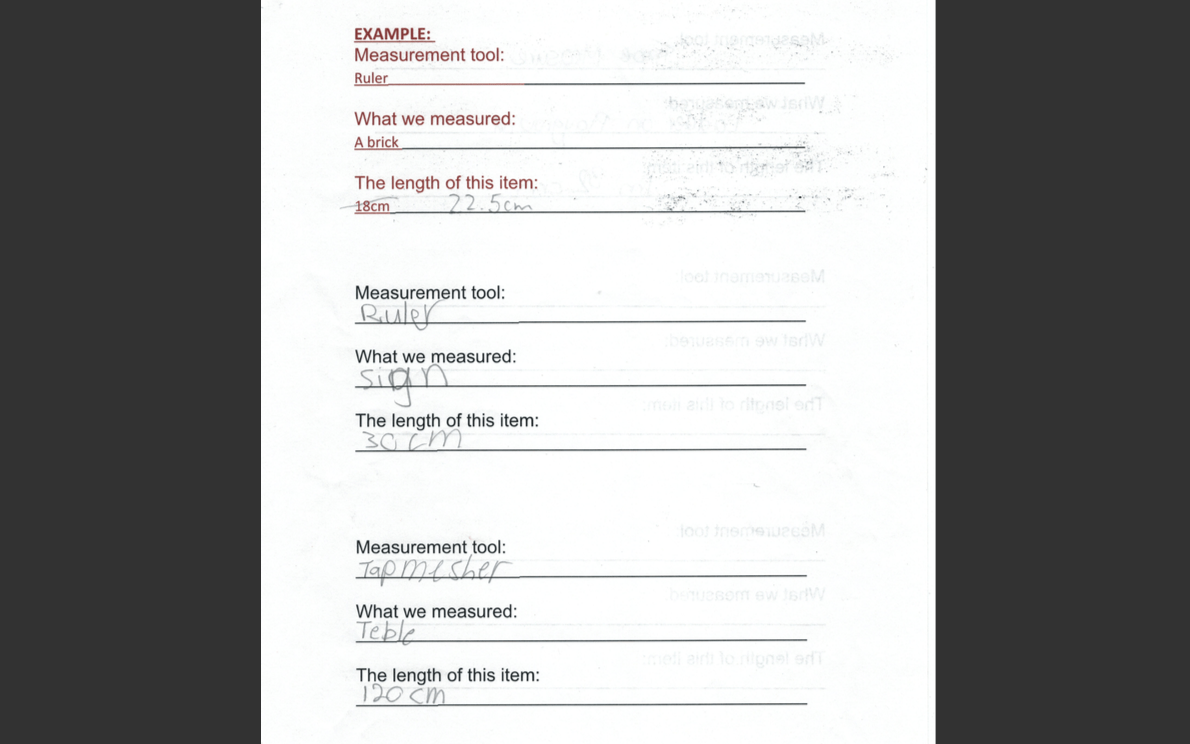3.1 Establish challenging learning goals
3.2 Plan, structure and sequence learning programs
While on placement at a rural Catholic Primary School with eight students in Years 3-6, I planned and delivered a Mathematics unit on measurement including length, perimeter, area, converting and mass. To effectively plan and sequence challenging learning goals for the various abilities, at the beginning of each new topic I gathered diagnostic information on each individual using class discussions and small worksheets to benchmark their knowledge (3.1, 3.2) (Reys et al, 2017). This process enabled me to establish and differentiate challenging learning activities for the diverse group of students (3.1).
Throughout the second Mathematics lesson on measuring length, I utilised the Gradual Release of Responsibility (GRR) model to plan and structure my content so it would flow and present students with engaging tasks (3.2). Initially, the class brainstormed any prior knowledge they had about measuring length, which certainly varied across the four year levels. It was crucial to ascertain student conceptions or misconceptions about length and from that we discussed the use of terms such as foot, yard and mile and when they might be used (Reys et al, 2017). By relating conversations and learning back to real-life situations, students continued to move along their individual learning continuum (Reys et al, 2017; Churchill et al, 2019). The key task for the lesson saw students split into ability pairs with differing scaffolded worksheets to complete a length measurement investigation. I consciously chose ability groups as opposed to mixed-ability because I recognised a substantial difference in measurement knowledge across the students and wanted to ensure every child had their own attainable and challenging learning experience (Churchill et al, 2019; Duchesne & McMaugh, 2019). For example, in Artefact (1), student’s y and z already had a sound grasp on length so their worksheet required them to find items that measured close to a certain length using decimals to record their findings as a way of extending their knowledge (3.1) (Reys et al, 2017). Alternatively, for the student’s new to measurement, Artefact (2) exhibits a teacher-guided worksheet that required them to simply measure items and record them, exclusive of decimals. These examples highlight that I implemented appropriate challenges through open-ended extension as well as personalising worksheets and tasks to suit the range of abilities (3.1) (Reys et al, 2017). By demonstrating effective planning and sequencing of challenging learning goals for this lesson, students were able to experience success in measuring length (3.1, 3.2) (Education Council, 2019; Reys et al, 2017).
Planning, structuring, sequencing and differentiating challenging measurement learning goals for the four year levels was a difficult, but valuable learning experience. Nonetheless, with a lot of support from my supervisor and plenty of practice, by the end of placement my supervising teacher praised my efforts, “As Susie got to know the students she was better able to tailor and differentiate her lessons to suit students needs, often providing individual learning programs for each child.” It is evident from this comment that I was able to demonstrate APST (3.1) and (3.2) in delivering the Australian Curriculum to this class during placement. As the completion of my studies draws closer, I will continue researching pedagogical approaches to assist in my implementation of challenging learning goals as well as effectively structuring my learning programs so that I can support students of varying abilities (3.1, 3.2) (Australian Institute for Teaching and School Leadership, n.d.). I look forward to applying and improving upon my current knowledge during my next placement.


References
Australian Institute for Teaching and School Leadership. (n.d). Australian professional standards for teachers. https://www.aitsl.edu.au/teach/standards
Churchill, R., Godhino, S., Johnson, N., Keddie, A., Letts, W., Lowe, K., Mackay, J., McGill, M., Moss, J., Nagel, M., Shaw, K., & Rogers, J. (2019). Teaching: Making a Difference (4th ed.). John Wiley & Sons Australia.
Duchesne, S., & McMaugh, A. (2019). Educational psychology: For learning and teaching (6thed.). Cengage Learning Australia.
Education Council. (2019). Alice Springs (Mparntwe) Education Declaration. https://docs.education.gov.au/system/files/doc/other/final_-_alice_springs_declaration_-_17_february_2020_security_removed.pdf
Reys, R., Rogers, A., Bennett, S., Cooke, A., Robson, K., & Ewing, B. (2017). Helping children learn mathematics (2nd ed.). Wiley.
